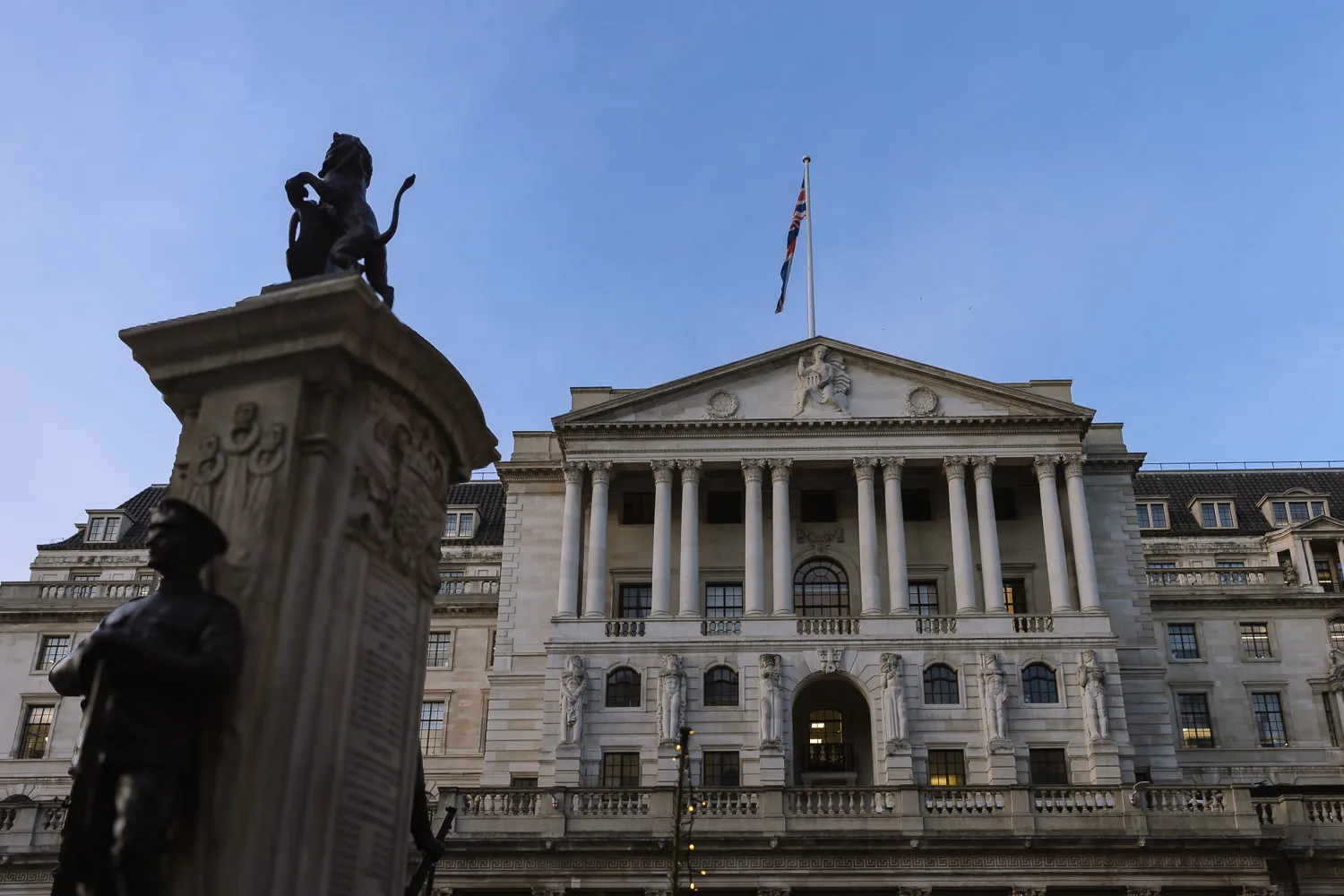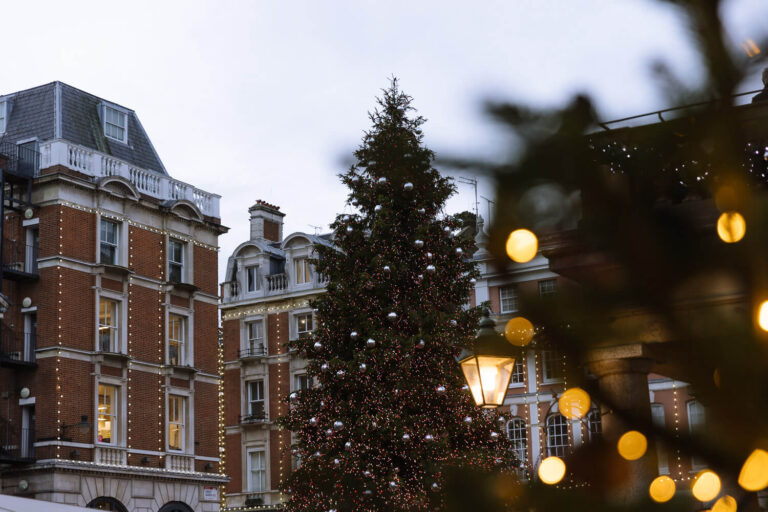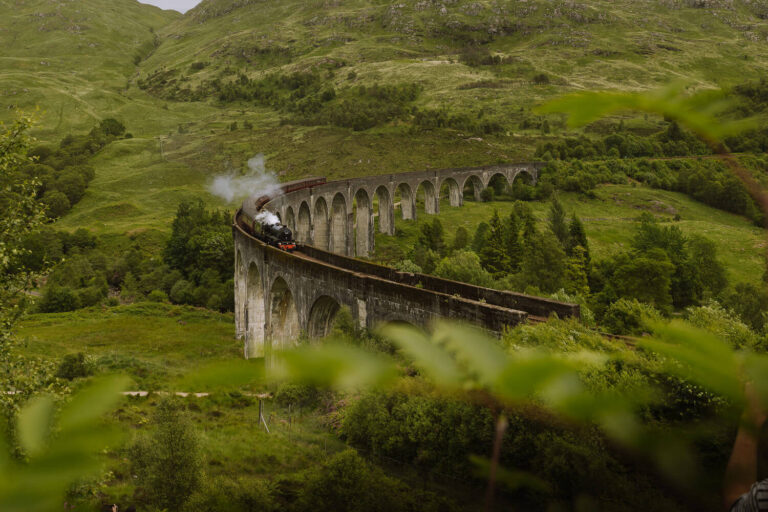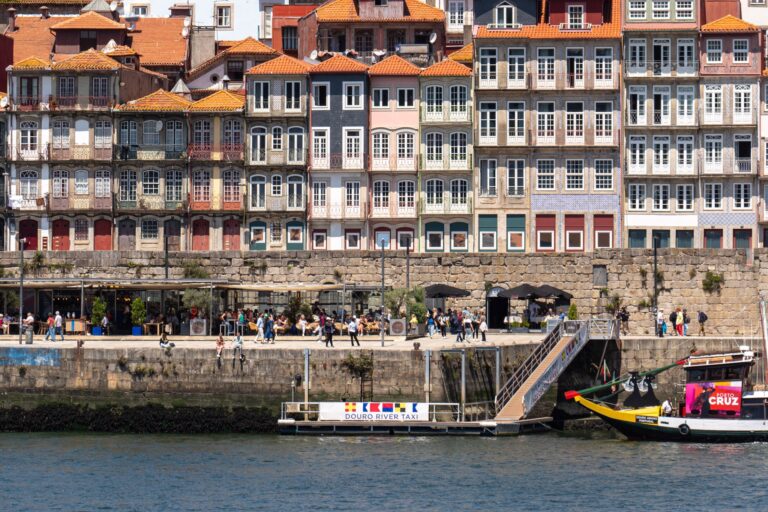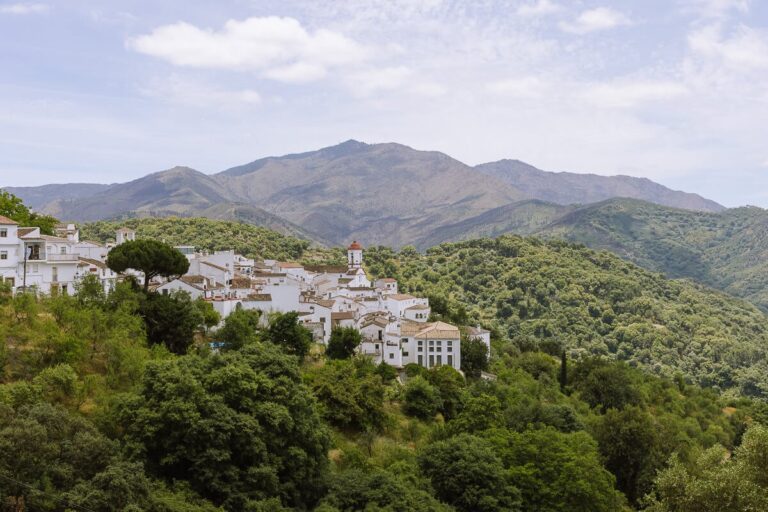City Of London Walking Tour: Historic Highlights Of London (+ Map) | Anywhere We Roam
Explore the historic centre of the City of London on this self-guided walking tour. Highlights include the Knights Templar Church, St Paul’s Cathedral and the Tower of London. Maps and instructions included.
LAST UPDATE: 15 Dec 2023
Anywhere We Roam is reader-supported. When you buy through links on our site, we may earn a small affiliate commission at no extra cost to you. Thanks for your support – Paul & Mark.
London is a massive city of around 9 million people, but the old City of London, known as the square mile, is its small historic heart. This is where the city first came to life before it expanded beyond the original boundaries in the 17th century.
Home to many of the most historic sites in the city, walking through its streets is a step back in time.
On this self-guided walking tour, you will visit the remains of a Roman temple, see one of the greatest Norman Castles, explore the medieval church of the Knights Templar, and peer up at Wren’s great cathedral.
Along the way, you’ll pass the institutions that helped build London including law courts, central banks, and trading exchanges.


CITY OF LONDON TOUR MAP
Use our map to navigate this self-guided walking tour of the City of London. We recommend starting at Holborn tube station and finishing at Tower Bridge tube station. However, you could also do this walk in reverse.
The walk is 7.25 kilometres and, if you walk without stopping, it would take about 1 hour and 30 minutes. There’s plenty to see along the way, so allow at least half a day.
How to use this map / Click on the top left of the map to display the list of locations, then click on the locations to display further information. Click on the top right corner of the map to open a larger version in a new tab or the star to save to your Google Maps.
LINCOLN’S INN FIELDS
Start at Holborn station and duck through Gate Street to enter Lincoln Inn Fields. Grab a coffee from Redemption Coffee Roasters at the entrance before you start the walk.
Lincoln’s Inn Fields is the largest public square in London. Surrounded by attractive townhouses, it has been here for almost 400 years. On its northern side is Sir John Soane’s Museum (free to enter), the former home of neo-classical architect John Soane. Inside, there’s a large collection of his paintings, sculptures, and drawings.
The house is in the same condition as it was when he died in 1837.

LINCOLN’S INN
At the eastern edge of the field is Lincoln’s Inn, one of only four Inns of Court in London that are entitled to call their members barristers. Set in beautiful historic grounds surrounding New Square, it is a hidden gem in London.
Dominating the scene is the Old Hall built in 1492. Its Tudor architecture of red brick, original roof timbers and stained-glass windows are capped with soaring turrets and sculptures.
The chapel, (free to enter) tucked into the corner of the square was rebuilt in 1623. Don’t miss the vaulted ceiling beneath its foundations.



ROYAL COURTS OF JUSTICE
Exit New Square and turn left on Carey Street. The glorious white building at the end of the street is Grade II-listed Maughan Library, now part of UCL. It was built in 1851 and its dodecagonal reading room (closed to the public) was inspired by the British Museum.
Turn right onto Bell Yard and then right again on the Strand to stand in front of the Royal Courts of Justice. Looking more like a towering cathedral than a law court, its soaring arches and stained-glass windows are decorated with the coats of arms of Lord Chancellors.
In the middle of the road outside the court is a dragon on a plinth. These cast iron dragons mark the boundary of the City of London, which you are about to enter.



TEMPLE CHURCH
Head east back up the Strand, turning right down Middle Temple Lane. This tiny alleyway takes you into the heart of ‘Temple,’ the headquarters of the Knights Templar until they were dissolved in 1312. Today it’s home to Temple Inn, another of the four Inns of Court.
Make a detour to Middle Temple Hall. Completed in the 1570’s its hammerbeam roof is the best in London but usually closed to the public.


Next up is Temple Church, one of the most significant historic buildings in London.
The oldest section of the church is The Round. Built by the Knights Templar and consecrated in 1185, it was designed to reflect the round church of the Holy Sepulchre in Jerusalem. Inside (£5 to enter) lie the tombs of knights, dating back 800 years.
Turn left up Old Mitre Court, then turn right onto Fleet Street.



FLEET STREET
Fleet Street used to be home to many of Britain’s most famous newspapers including the Daily Telegraph and The Times. Looking for cheaper premises, they left in the 1980s and Fleet Street lost its energy.
Nevertheless, the views up to St Paul’s that flicker between the buildings at the end of the road are excellent.
Literary enthusiasts should take the short detour off Fleet Street to Doctor Johnson’s House (see walking tour map above). This 300-year-old townhouse was home to Samuel Johnson, compiler of his great Dictionary of the English Language. The house contains a collection relating to his work (£9 to enter).


ST PAULS CATHEDRAL
Rising above the narrow streets of the City of London is St Paul’s Cathedral. One of the most recognisable buildings in London, it dates to a church founded here in 604 CE.
The present building was completed in 1710 by Sir Christopher Wren and has dominated the skyline ever since. It’s worth walking anti-clockwise around the entire church and peering up at the remarkable dome and sculpture-covered facades.
Inside (cheaper if you book in advance), you can explore the towering nave, stained glass windows, and tombs in the crypt. They include Nelson, Wellington, Joseph Turner, and Sir Alexander Fleming.
You can also climb the 1161 steps to the Whispering Gallery (underneath the dome) and the top of the dome which offers panoramic views across London.

PATERNOSTER SQUARE
Paternoster Square is on the northern side of St Paul’s Cathedral. The entrance is marked by Temple Bar Gate, the only surviving gateway to the city of London dating to the late 17th century. The gate was at the junction of Strand and Fleet Street before it was moved here in 2004.
Pass under the gate, turn right through Paternoster Square, cross over the busy junction, and head up Cheapside towards the skyscrapers of the city.


WREN CHURCHES
Cheapside runs through the parish of St Mary-le-Bow. The parish used to include 9 churches, but all were destroyed in the Great Fire of London in 1666.
Four were rebuilt by Sir Christopher Wren. Most important is the Church of St Mary-le-Bow (free to enter) made famous by the English nursery rhyme Oranges and Lemons.
After the church turn right down Bow Lane, then left down Watling Street. Cross over Victoria Street and head down Bloomberg Arcade where there is an excellent choice of restaurants. Turn left on Walbrook.


LONDON MITHRAEUM
During the construction of Bucklersbury House in 1954, ruins were found beneath Walbrook Street. It turned out to be the remains of a third-century Roman temple dedicated to the god Mithras.
After a failed attempt to move the temple, Bloomberg bought the property and restored it. Today, the Temple of Mithras (or London Mithraeum) sits underneath Bloomberg’s European Headquarters.
London Mithraeum (free to enter) has a small museum section before stairs descend to the temple. Entry is every 20 minutes and begins with an immersive light and sound show, after which you are free to walk around the temple walls.


BANK OF ENGLAND
Exit London Mithraeum, turn left up Walbrook, and then right onto Queen Victoria Street. In front of you stands The Bank of England and Royal Exchange.
The Bank of England is the central bank of the United Kingdom and the model upon which most other central banks are built. Established in 1694, it’s the eighth oldest bank in the world and a cornerstone of Britain’s success in the 18th and 19th centuries.
Tucked around the corner of its imposing façade is the small Bank of England Museum (free to enter) detailing the history of the bank and displaying old banknotes. There’s even a gold bar in a box that you can try to lift.


ROYAL EXCHANGE
The Royal Exchange is even more imposing than the Bank of England. Opened in 1571 it was to be the centre of commerce in the City of London. Only the exchange of goods was allowed here, and the unruly behaviour of stockbrokers was banished to nearby coffee houses.
The Royal Exchange has been destroyed twice by fire. The version you see today was opened by Queen Victoria in 1844.
Its portico of eight Corinthian columns is topped by a pediment covered in 17 figures representing merchants and traders. Enter through the columns and you’ll find Fortnum & Mason and other boutique brands in the grand halls and arcades.
Exit out the back, turn right, and then left onto Cornhill. At the A10 main road turn right and almost immediately on your left is Leadenhall Market.


LEADENHALL MARKET
Dating back to the 14th century, Leadenhall Market is one of the oldest markets in London. Originally a meat, game, and poultry market, an ornate roof was added in 1881.
A dramatic restoration in 1991 made this Grade II listed building one of the most attractive in London. Its beautifully lit arches appeared in Harry Potter and the Philosopher’s Stone.
Head through the market, then pass the back of the tubular Lloyds Building. Turn right on Lime Street and cross over Fenchurch Street onto Philpot Street to reach the Sky Garden.


SKY GARDEN
Sky Garden is on top of the building known as the Walkie-Talkie (20 Fenchurch Street). It’s the highest public garden in London and it has magical panoramic views across the city.
It’s one of the best free things to do in London. Book a free timed entry slot up to three weeks in advance.
Next wind your way down to Monument following the route on the map above.



MONUMENT
The Great Fire of London started on 02 September 1666 in Thomas Farriner’s bakery in Pudding Lane. It swept through the City of London for 4 days destroying most of the buildings.
The fire is commemorated by the large, fluted Doric column called Monument built between 1671 and 1677. You can climb the 311 steps to the viewing platform at the top (£6), but the views are much better from the Sky Garden.
Near the base of Monument, don’t miss the sign marking Thomas Farriner’s bakery on Pudding Lane.
Before heading to St Dunstan in the East take an optional detour onto London Bridge for views along the Thames and up to Tower Bridge.


ST DUNSTAN IN THE EAST
St Dunstan in the East is one of London’s best-hidden gems. Severely damaged in the Blitz of 1941 only the tower and steeple survived. The church was never rebuilt and as nature began to take over, it was opened as a garden in 1967.
Today, trees and vines climb up the ruined church walls and it’s one of the most atmospheric locations in the city.
Now follow the map, crossing over Lower Thames Street and loop anti-clockwise around the Tower of London.



TOWER OF LONDON
Next on our historic self-guided City of London walking tour is the Tower of London. It was founded in 1066, but the white tower that gives the castle its name was built by William the Conqueror in 1078.
Stunningly situated by the river Thames it was expanded in the 12th and 13th centuries, but its general layout has remained ever since.
It’s free to walk around the outer walls, but to see the Crown Jewels and explore the White Tower, Medieval Palace, and torture exhibition you’ll have to head inside – book a time slot in advance.

TOWER BRIDGE
London’s most ornate bridge is 800 ft (240m) across and was built between 1886 and 1894. The two bridge towers are connected at the upper level by two horizontal walkways and at the lower level by a pair of bascules that open to allow boats to pass underneath.
It’s free to walk across the pedestrian footpath on the lower levels. You’ll need to buy a ticket to head up the towers, visit the Victorian bascule engine rooms, and look through the glass floors of the upper-level walkways.
Our City of London walking tour ends at Tower Bridge tube station. We hope you enjoyed it.


